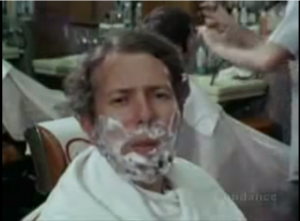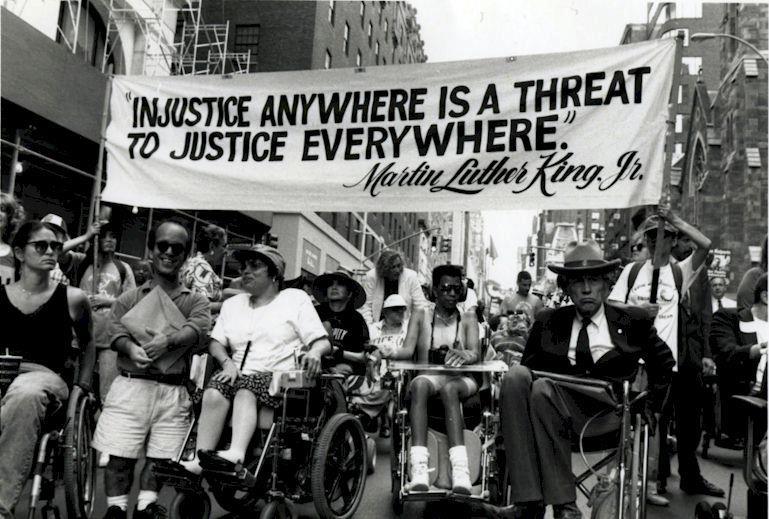Part 3 of 4 of the series When Life and Death is “A Matter of Policy”
In part 2, I examined some of the bad things that can happen when people in medical settings apply “the rules” strictly, unmodified by the patient involved or the dictates of conscience. Now I’ll look at the what and why of human obedience…
The Milgram experiment on obedience to authority figures was the one of the most extensive and certainly the most well-known study of obedience ever conducted. The Milgram experiment was a series of social psychology experiments designed and run by psychologist Stanley Milgram in the summer of 1961 specifically to test how far “Just following orders!” goes with Americans, to answer “could genocide happen here if framed by authority figures as lawful?” “Could it happen here?”
Dr. Milgram was keenly interested in how social context affects behavior, and also was an early creator of educational films. He made a film about the obedience experiment along with other films teaching social psychology.

For the experiment on obedience, Dr. Milgram et al carefully selected the study participants to screen out psychos, any abnormal psychology excluded, so the subjects were your totally normal New England Christian people for the most part. He had researchers telling the subjects to shock the unseen “learner” in the next room when they supposedly got the memory questions wrong, shock people with the (not actually real) shock box, increasing the power of the shock successively. In Milgram’s first set of experiments, an incredibly disturbing 65 percent of participants went all the way up to the massive experiment-ending 450 volt shock.

Men and women showed identical willingness to kill the “learner” with fatal shocks, though the experiment isn’t about killing, it’s about obeying bad things and inflicting pain on others. In the course of the experiments, the experimenter (the authority figure) would urge the subject to continue, to “please go on,” and re-assure them that the electric shocks were their job, part of something necessary, non-deadly and that the researcher is legally responsible. For the subjects, there’s the ambiguity of the volts on the board vs. the experimenter telling them it doesn’t cause “long-term damage,” the authority figure taking responsibility, and the overarching concept that this benefits science.
Med school psychiatry faculty had predicted only 1% of subjects would go to maximum shock, but in the initial experiments and all subsequent (and present-day) repeats of the experiment, regardless of  political geography or background, consistently 55-65 percent will go all the way to XXX, the maximum 450 volts. Few variations, like changing the proximity of the authority figure, moving the victim closer, lower subjects’ obedience levels. In a variation where participants had to hold the learner’s arm physically onto a shock plate, compliance decreased but 30 percent still obeyed and administered the fatal shock. Other variations, including age, gender, religion, politics, made no difference, revealing obedience to authority to be one of the few constants of social behavior, unaffected by time and place.
political geography or background, consistently 55-65 percent will go all the way to XXX, the maximum 450 volts. Few variations, like changing the proximity of the authority figure, moving the victim closer, lower subjects’ obedience levels. In a variation where participants had to hold the learner’s arm physically onto a shock plate, compliance decreased but 30 percent still obeyed and administered the fatal shock. Other variations, including age, gender, religion, politics, made no difference, revealing obedience to authority to be one of the few constants of social behavior, unaffected by time and place.
The urge to OBEY the bureaucrats in charge is immense. In this recent repeat of the Milgram experiment for the BBC, 9/12 went all the way to maximum shock 450 volts, only 3 refused. The guy shown refusing seems a totally non-descript random middle-aged white male, so the people willing to tell the authority figure to shove it, that they won’t harm someone, period, fit no particular pattern. People of strong conscience don’t adhere to what you would expect, a certain mold or “type,” it seems closer to “the people you least expect.”
Milgram concluded:
“Ordinary people, simply doing their jobs, and without any particular hostility on their part, can become agents in a terrible destructive process. Moreover, even when the destructive effects of their work become patently clear, and they are asked to carry out actions incompatible with fundamental standards of morality, relatively few people have the resources needed to resist authority.”
Recommended resource: TED Talk on the Milgram experiment and the Stanford Prison Experiment
Milgram Experiment-like Reality in U.S. Hospitals?
The parallels with U.S. hospitals are disturbingly obvious here.
Doctors, nurses, RTs, et al…
if you’re ordered to follow rules that could hurt or endanger the patient, would you?
Not only do you have authority figures bearing down on you, the administrators have real power to impose repercussions, and you know the supervisors and bureaucrats up close, you’ve observed them in their natural habitat(s) and know that they could really ruin your week if not fire you if you’re “not a team player,” serious powers the Milgram experiment’s authority figures never claimed to have. Throw in fatigue, patient censuses that often mean 1:30 nurse-to-sick-people ratios, and the self-evident reality that hands-on staff in clinical settings may only see a given patient for a few hours or one shift, then poof, but have to deal with the same supervisor(s) most/all work weeks, and you’re probably going to get 90-95% of staff obeying bad things if it were possible to run a Milgram-type experiment in a hospital situation.
The only time that the order to take me off my normal ventilator and put me on the hospital vent was ultimately not followed, was when a charge nurse (who we never saw) apparently stood up for me in the behind the scenes debate with higher-level administrators. Then it is an order that authority figures disagree on, and therefore very different for the front-line staff actually doing it.
James Madison famously wrote: “If angels were to govern men, neither external nor internal controls on government would be necessary.” Like the founding fathers set out to engineer checks and balances since the republic would be led by “men” not “angels,” the medical sphere should have real controls. Not to be harsh or judgmental, I just think we should not assume frail humans, fatigued and under the gun to OBEY the boss, will be moral heroes 100 percent of the time. As “Publius” and also “Publius” (James Madison and Alexander Hamilton) articulated in the Federalist Papers, banking on mankind to be consistently angelic is a really bad bet. Not trying to malign anybody, just trying to look at human social behavior as it is.
Front-line staff need good conditions, whistleblower protections with real teeth, flexibility to improvise, trust in their decision-making, and the main “performance metrics” should be patient outcomes and happiness. You can’t have bad incentives so divorced from patient outcomes, entirely non aligned with the task of helping people, and have functional health care.
VA hospital execs were given performance bonuses $$$$ for meeting certain metrics, like first appointment for veterans after intake within 14 days, and, quelle surprise, the incentives being to cook the books—and as far as I know that structure of cash bonus incentives is still in place—documenting fictions was exactly what resulted, it being in the hospital leaders’ own best interests to rack up performance pay and reassure the higher-ups that their impossible goals were going forward just swimmingly. This is why VA secretary Eric Shinseki was so clueless… the culture was to tell everybody at the top of the VA food chain only what they want to hear.
It’s a cold and bleak world, but there are still lots of good people, people of conscience in medicine who take their oaths to patients (e.g. “Primum non nocere,” first, do no harm) as serious life missions. There are points of light, “diamonds in the rough.” Some of these med-people of conscience have blogs.
In part 4, the finale, I’ll show you what some of my favorite medical bloggers say about the VA fiasco and medibureaucracy.
I also write about disobeying the power structure back in June, see: Law and Order: When Is It Wrong to Follow The Law?
Nick
3/4 Series When Life and Death is “A Matter of Policy”
In Part 4, activism and rays of hope from medical bloggers
go back to Part 2, Paramedics, the VA, and when following policy goes horribly wrong
or go back to Part 1: introduction to the series/weird ventilator rule
